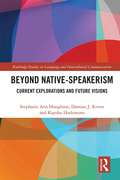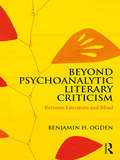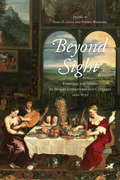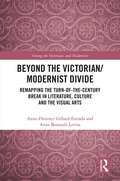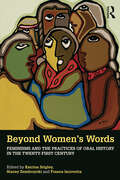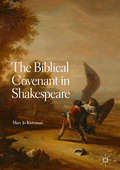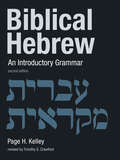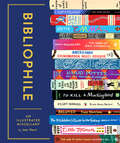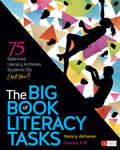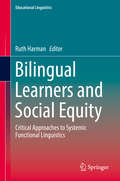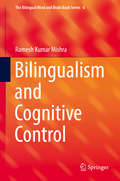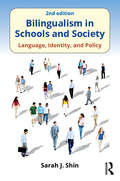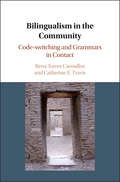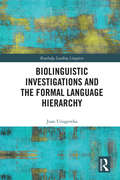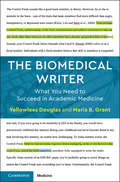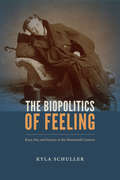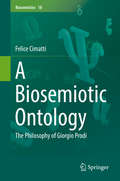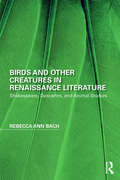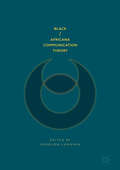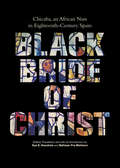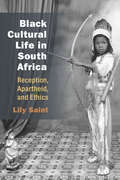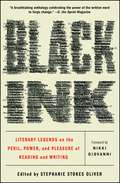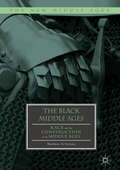- Table View
- List View
Beyond Native-Speakerism: Current Explorations and Future Visions (Routledge Studies in Language and Intercultural Communication)
by Stephanie Ann Houghton Damian J. Rivers Kayoko HashimotoDespite unsubstantiated claims of best practice, the division of language-teaching professionals on the basis of their categorization as ‘native-speakers’ or ‘non-native speakers’ continues to cascade throughout the academic literature. It has become normative, under the rhetorical guise of acting to correct prejudice and/or discrimination, to see native-speakerism as having a single beneficiary – the ‘native-speaker’ – and a single victim – the ‘non-native’ speaker. However, this unidirectional perspective fails to deal with the more veiled systems through which those labeled as native-speakers and non-native speakers are both cast as casualties of this questionable bifurcation. This volume documents such complexities and aims to fill the void currently observable within mainstream academic literature in the teaching of both English, and Japanese, foreign language education. By identifying how the construct of Japanese native-speaker mirrors that of the ‘native-speaker’ of English, the volume presents a revealing insight into language teaching in Japan. Further, taking a problem-solving approach, this volume explores possible grounds on which language teachers could be employed if native-speakerism is rejected according to experts in the fields of intercultural communicative competence, English as a Lingua Franca and World Englishes, all of which aim to replace the ‘native-speaker’ model with something new.
Beyond Psychoanalytic Literary Criticism: Between Literature and Mind
by Benjamin H. OgdenThrough a series of radical and innovative chapters, Beyond Psychoanalytic Literary Criticism: Between Literature and Mind challenges the tradition of applied psychoanalysis that has long dominated psychoanalytic literary criticism. Benjamin H. Ogden, a literary scholar, proposes that a new form of analytic literary criticism take its place, one that begins from a place of respect for the mystery of literature and the complexity of its inner workings. In this book, through readings of authors such as J.M. Coetzee, Flannery O’Connor, and Vladimir Nabokov, the mysteries upon which literary works rely for their enduring power are enumerated and studied. Such mysteries are thereafter interwoven into a series of pioneering studies of how the conceptions of thinking, dreaming, and losing become meaningful within the unique aesthetic conditions of individual novels and poems. Each chapter is a provisional solution to the difficult "bridging problems" that arise when literary figures work in the psychoanalytic space, and when psychoanalysts attempt to make use of literature for analytic purposes. At every turn, Beyond Psychoanalytic Literary Criticism: Between Literature and Mind acts as a living example of the territory it explores: the space between two disciplines, wherein the writer brings into being a form of psychoanalytic literary criticism of his own making. Forgoing traditional applied psychoanalysis and technical jargon, this highly accessible, interdisciplinary work will appeal to psychoanalysts and psychoanalytic psychotherapists, as well as literary critics and scholars.
Beyond Sight: Engaging the Senses in Iberian Literatures and Cultures, 1200–1750
by Ryan D. Giles Steven WagschalBeyond Sight, edited by Ryan D. Giles and Steven Wagschal, explores the ways in which Iberian writers crafted images of both Old and New Worlds using the non-visual senses (hearing, smell, taste, and touch). The contributors argue that the uses of these senses are central to understanding Iberian authors and thinkers from the pre- and early modern periods. Medievalists delve into the poetic interiorizations of the sensorial plane to show how sacramental and purportedly miraculous sensory experiences were central to the effort of affirming faith and understanding indigenous peoples in the Americas. Renaissance and early modernist essays shed new light on experiences of pungent, bustling ports and city centres, and the exotic musical performances of empire. This insightful collection covers a wide array of approaches including literary and cultural history, philosophical aesthetics, affective and cognitive studies, and theories of embodiment. Beyond Sight expands the field of sensory studies to focus on the Iberian Peninsula and its colonies from historical, literary, and cultural perspectives.
Beyond the Victorian/ Modernist Divide: Remapping the Turn-of-the-Century Break in Literature, Culture and the Visual Arts (Among the Victorians and Modernists)
by Anne-Florence Gillard-Estrada Anne Besnault-LevitaBeyond the Victorian/ Modernist Divide contributes to a new phase in the Victorian-modern debate of traditional periodization through the perspective lens of literature and the visual arts. Breaking away from conventionally fixed discourses and dichotomies, this book utilizes an interdisciplinary approach to examine the existence of overlaps and unexplored continuities between the Victorians, the post-Victorians and the modernists, including the fields of music, architecture, design, science, and social life. Furthermore, the book remaps the cultural history of two critical meta-narratives and their interdependence – the myth of "high modernism" and the myth of "Victorianism" – by building on recent scholarly work and addressing the question of the "turn of the century break theory" with a new set of arguments and contributions. The essays presented within acknowledge the existence of a break-theory in modernism, but question this theory by re-contextualising it while uncovering long-masked continuities between artists, genres and forms across the divide. The collection offers a new approach to modernism, Edwardianism, and Victorianism; utilizing the cross-fertilisation of interdisciplinary approaches, and by combining contributions that look forward from the Victorians with other contributions that look backward from the modernists. While literary modernism and its vexed relationships with the nineteenth century is a central subject of the book, further analysis includes artistic discourses and theories stemming from history, the visual arts, science, music and design. Each chapter offers a fresh interpretation of individual artists, navigating away from characteristic classifications of works, authors and cultural phenomena. Ultimately, the volume argues that though periodization and genre categories play substantial roles in this divide, it is also essential to be critically aware of the way cultural history has been, and continues to be, constructed.
Beyond Women's Words: Feminisms and the Practices of Oral History in the Twenty-First Century
by Franca Iacovetta Katrina Srigley Stacey ZembrzyckiBeyond Women’s Words unites feminist scholars, artists, and community activists working with the stories of women and other historically marginalized subjects to address the contributions and challenges of doing feminist oral history. Feminists who work with oral history methods want to tell stories that matter. They know, too, that the telling of those stories—the processes by which they are generated and recorded, and the different contexts in which they are shared and interpreted—also matters—a lot. Using Sherna Berger Gluck and Daphne Patai’s classic text, Women’s Words, as a platform to reflect on how feminisms, broadly defined, have influenced, and continue to influence, the wider field of oral history, this remarkable collection brings together an international, multi-generational, and multidisciplinary line-up of authors whose work highlights the great variety in understandings of, and approaches to, feminist oral histories. Through five thematic sections, the volume considers Indigenous modes of storytelling, feminism in diverse locales around the globe, different theoretical approaches, oral history as performance, digital oral history, and oral history as community-engagement. Beyond Women’s Words is ideal for students of oral history, anthropology, public history, women’s and gender history, and Women’s and Gender Studies, as well as activists, artists, and community-engaged practitioners.
The Biblical Covenant in Shakespeare
by Mary Jo KietzmanThe theo-political idea of covenant—a sacred binding agreement—formalizes relationships and inaugurates politics in the Hebrew Bible, and it was the most significant revolutionary idea to come out of the Protestant Reformation. Central to sixteenth-century theology, covenant became the cornerstone of the seventeenth-century English Commonweath, evidenced by Parliament’s passage of the Protestation Oath in 1641 which was the “first national covenant against popery and arbitrary government,” followed by the Solemn League and Covenant in 1643. Although there are plenty of books on Shakespeare and religion and Shakespeare and the Bible, no recent critics have recognized how Shakespeare’s plays popularized and spread the covenant idea, making it available for the modern project. By seeding the plays with allusions to biblical covenant stories, Shakespeare not only lends ethical weight to secular lives but develops covenant as the core idea in a civil religion or a founding myth of the early-modern political community, writ small (family and friendship) and large (business and state). Playhouse relationships, especially those between actors and audiences, were also understood through the covenant model, which lent ethical shading to the convention of direct address. Revealing covenant as the biblical beating heart of Shakespeare’s drama, this book helps to explain how the plays provide a smooth transition into secular society based on the idea of social contract.
Biblical Hebrew: An Introductory Grammar
by Page H. KelleyA standard, much-used textbook updated and improved Comprehensive in scope, this carefully crafted introductory grammar of Biblical Hebrew offers easy-to-understand explanations, numerous biblical illustrations, and a wide range of imaginative, biblically based exercises. The book consists of thirty-one lessons, each presenting grammatical concepts with examples and numerous exercises judiciously selected from the biblical text. These lessons are accompanied by eleven complete verb charts, an extensive vocabulary list, a glossary of grammatical terms, and a subject index. In this second edition Timothy Crawford has updated the text throughout while preserving the Page Kelley approach that has made Biblical Hebrew so popular over the years.
Bibliophile: An Illustrated Miscellany (Bibliophile Ser.)
by Jane MountBook lovers, rejoice! In this love letter to all things bookish, Jane Mount brings literary people, places, and things to life through her signature and vibrant illustrations. Readers will:• Tour the world's most beautiful bookstores• Test their knowledge of the written word with quizzes • Find their next great read in lovingly curated stacks of books• Sample the most famous fictional meals • Peek inside the workspaces of their favorite authorsA source of endless inspiration, literary facts and recommendations, and pure bookish joy, Bibliophile is sure to enchant book clubbers, English majors, poetry devotees, inspiring writers, and any and all who identify as bookworms.
The Big Book of Literacy Tasks, Grades K-8: 75 Balanced Literacy Activities Students Do (Not You!) (Corwin Literacy)
by Nancy L. AkhavanThe Comprehensive Handbook for Scaffolding Students’ Literacy Growth Our readers and writers must “do the doing” if they are to succeed. In The Big Book of Literacy Tasks, Nancy Akhavan offers an instructional plan designed to yield independent effort and engagement. 75 tasks in beautiful full-color two-pagers ensure gradual release by moving more swiftly from the “I do” teacher phase to the “you do” student phase. Complete with amazing scaffolding tips for meeting the needs of a range of learners, The Big Book of Literacy Tasks gives you a clear framework for “working the minds” of your students, helping them forge their own path to becoming better readers and writers.
The Big Book of Literacy Tasks, Grades K-8: 75 Balanced Literacy Activities Students Do (Not You!) (Corwin Literacy)
by Nancy L. AkhavanThe Comprehensive Handbook for Scaffolding Students’ Literacy Growth Our readers and writers must “do the doing” if they are to succeed. In The Big Book of Literacy Tasks, Nancy Akhavan offers an instructional plan designed to yield independent effort and engagement. 75 tasks in beautiful full-color two-pagers ensure gradual release by moving more swiftly from the “I do” teacher phase to the “you do” student phase. Complete with amazing scaffolding tips for meeting the needs of a range of learners, The Big Book of Literacy Tasks gives you a clear framework for “working the minds” of your students, helping them forge their own path to becoming better readers and writers.
Bilingual Learners and Social Equity: Critical Approaches to Systemic Functional Linguistics (Educational Linguistics #33)
by Ruth HarmanThis volume explores how educators conceptualized and implemented critical approaches to systemic functional linguistics that support bilingual students in appropriating and challenging dominant knowledge domains in K-16 contexts. The researchers exhibit a shared commitment to enacting a culturally sustaining SFL praxis that validates multilingual meaning making, pushes against social inequity, and fosters creative re-mixing of available semiotic resources. It should prove a valuable resource for students, teachers and researchers interested in applied linguistics, education and critical theory.
Bilingualism and Cognitive Control (The Bilingual Mind and Brain Book Series #6)
by Ramesh Kumar MishraThis thought-provoking monograph makes a multidisciplinary case for bilingualism as a possible enhancer of executive function, particularly cognitive control. Its central focus is the cognitive operations of the bilingual brain in processing two languages and whether they afford the brain a greater edge on neuroplasticity—in short, a cognitive advantage. Major issues and controversies in the debate are analyzed from cognitive neuroscience, psycholinguistic, and integrative perspectives, with attention paid to commonly and rarely studied domains at work in bilingual processing. The author also pinpoints future areas for improved research such as recognizing the diversity of bilingualism, not simply in languages spoken but also in social context, as seen among immigrants and refugees. Included in the coverage: The evolution of bilingualism.What goes on in a bilingual mind? The core cognitive mechanisms.Cognitive advantage of bilingualism and its criticisms.Neuroscience of bilingualism.Bilingualism, context, and control.Attention, vision, and control in bilinguals. With its cogent takes on ongoing questions and emerging issues, Bilingualism and Cognitive Control is of immediate interest to bilingual researchers and practitioners interested in understanding the behavioral aspects and neurobiology of bilingualism and the dynamic character of the bilingual/multilingual/second language learner’s mind, as well as the growing number of advanced undergraduate and graduate students interested in the psychology/psycholinguistics of bilingualism, bilingual cognitive psychology, cognitive science, and cognitive neuroscience.
Bilingualism in Schools and Society: Language, Identity, and Policy, Second Edition
by Sarah J. ShinThis revised edition of Bilingualism in Schools and Society is an accessible introduction to the sociolinguistic and educational aspects of and the political issues surrounding bilingualism, including code-switching in popular music, advertising, and online social spaces. It also addresses the personal aspect of the topic in a well-informed discussion of what it means to study and live with multiple languages in a globalized world and practical advice on raising bilingual children. Extensive new material has been added that deals with more holistic understandings of bilingual performance, including translanguaging, flexible bilingualism, and code-meshing; blending standard and vernacular languages/dialects in hybrid texts; and recent developments in policies surrounding the education of English Learners and EL assessment, including Common Core State Standards (CCSS), PARCC and SBAC testing, WIDA and ELPA21 language assessments, and Every Student Succeeds Act (ESSA). Updated and new discussions on community-based heritage language programs and 'super-diversity' further enhance this new edition, along with updated statistics on bilingual populations and the world's top languages. Each chapter includes lists of further readings, helpful digital resources and study questions, as well as student activities and boxed vignettes. Firmly grounded in the analysis of empirical work with bilingual children and adults in various multilingual settings throughout the world, Bilingualism in Schools and Society is the ideal text for courses on bilingualism in language education programs.
Bilingualism in the Community: Code-switching and Grammars in Contact
by Catherine E. Travis Rena Torres CacoullosDoes the use of two languages by bilinguals inevitably bring about grammatical change? Does switching between languages serve as a catalyst in such change? <P><P>It is widely held that linguistic code-switching inherently promotes grammatical convergence - languages becoming more similar to each other through contact; evidence for this, however, remains elusive. A model of how to study language contact scientifically, Bilingualism in the Community highlights variation patterns in speech, using a new bilingual corpus of English and Spanish spontaneously produced by the same speakers. Putting forward quantitative diagnostics of grammatical similarity, it shows how bilinguals' two languages differ from each other, aligning with their respective monolingual benchmarks. The authors argue that grammatical change through contact is far from a foregone conclusion in bilingual communities, where speakers are adept at keeping their languages together, yet separate. The book is compelling reading for anyone interested in bilingualism and its importance in society.
Biolinguistic Investigations and the Formal Language Hierarchy (Routledge Leading Linguists)
by Juan UriagerekaThis volume collects some of Juan Uriagereka’s previously published pieces and presentations on biolinguistics in recent years in one comprehensive volume. The book’s introduction lays the foundation for the field of biolinguistics, which looks to integrate concepts from the natural sciences in the analysis of natural language, situating the discussion within the minimalist framework. The volume then highlights eight of the author’s key papers from the literature, some co-authored, representative of both the architectural and evolutionary considerations to be taken into account within biolinguistic research. The book culminates in a final chapter showcasing the body of work being done on biolinguistics within the research program at the University of Maryland and their implications for interdisciplinary research and future directions for the field. This volume is essential reading for students and scholars interested in the interface between language and the natural sciences, including linguistics, syntax, biology, archaeology, and anthropology.
The Biomedical Writer: What You Need to Succeed in Academic Medicine
by Yellowlees Douglas Maria B. GrantCo-authored by a leading ophthalmology researcher and a professor with 15 years of experience teaching writing in the biomedical sciences, The Biomedical Writer addresses ways to use psychology and neuroscience to equip researchers and clinicians with an understanding of how effects like priming, primacy, recency, framing, and apparent paradoxes can make or break your articles and grant proposals. The Biomedical Writer covers everything from making sentences readable, effective, and memorable to working with collaborators under unforgiving deadlines. Going far beyond the basic structure and content of manuscripts and proposals, this guide to writing in biomedicine also focuses on topics that include handling negative results and the most important and neglected step in submitting manuscripts to journals. Addresses the micro components of writing in biomedicine, and how to write by anticipating how readers process information.<P> Written by two researchers with complementary backgrounds and wide working knowledge of an array of fields in the biomedical sciences. <P> Guides researchers in every field in biomedicine on to how to write persuasively and effectively.
The Biopolitics of Feeling: Race, Sex, and Science in the Nineteenth Century
by Kyla SchullerIn The Biopolitics of Feeling Kyla Schuller unearths the forgotten, multiethnic sciences of impressibility—the capacity to be transformed by one's environment and experiences—to uncover how biopower developed in the United States. Schuller challenges prevalent interpretations of biopower and literary cultures to reveal how biopower emerged within the discourses and practices of sentimentalism. Through analyses of evolutionary theories, gynecological sciences, abolitionist poetry and other literary texts, feminist tracts, child welfare reforms, and black uplift movements, Schuller excavates a vast apparatus that regulated the capacity of sensory and emotional feeling in an attempt to shape the evolution of the national population. Her historical and theoretical work exposes the overlooked role of sex difference in population management and the optimization of life, illuminating how models of binary sex function as one of the key mechanisms of racializing power. Schuller thereby overturns long-accepted frameworks of the nature of race and sex difference, offers key corrective insights to modern debates surrounding the equation of racism with determinism and the liberatory potential of ideas about the plasticity of the body, and reframes contemporary notions of sentiment, affect, sexuality, evolution, and heredity.
A Biosemiotic Ontology: The Philosophy of Giorgio Prodi (Biosemiotics #18)
by Felice CimattiGiorgio Prodi (1928-1987) was an important Italian scientist who developed an original philosophy based on two basic assumptions: 1. life is mainly a semiotic phenomenon; 2. matter is somewhat a semiotic phenomenon.Prodi applies Peirce's cenopythagorean categories to all phenomena of life and matter: Firstness, Secondness, and Thirdness. They are interconnected meaning that the very ontology of the world, according to Prodi, is somewhat semiotic. In fact, when one describes matter as “made of” Firstness and Secondness, this means that matter ‘intrinsically’ implies semiotics (with Thirdness also being present in the world).At the very heart of Prodi’s theory lies a metaphysical hypothesis which is an ambitious theoretical gesture that places Prodi in an awkward position with respect to the customary philosophical tradition. In fact, his own ontology is neither dualistic nor monistic. Such a conclusion is unusual and weird, but much less unusual in present time than it was when it was first introduced. The actual resurgence of various “realisms” make Prodi’s semiotic realism much more interesting than when he first proposed his philosophical approach. What is uncommon, in Prodi perspective, is that he never separated semiotics from the materiality of the world. Prodi does not agree with the “standard” structuralist view of semiosis as an artificial and unnatural activity. On the contrary, Prodi believed semiosis (that is, the interconnection between Firstness, Secondness and Thirdness) lies at the very bottom of life. On one hand, Prodi maintains a strong realist stance; on the other, a realism that includes semiosis as ‘natural’ phenomena. This last view is very unusual because all forms, more or less, of realism exclude semiosis from nature but they frequently “reduce” semiosis to non-semiotic elements. According to Prodi, semiosis is a completely natural phenomenon.
Birds and Other Creatures in Renaissance Literature: Shakespeare, Descartes, and Animal Studies (Perspectives on the Non-Human in Literature and Culture)
by Rebecca Ann BachThis book explores how humans in the Renaissance lived with, attended to, and considered the minds, feelings, and sociality of other creatures. It examines how Renaissance literature and natural history display an unequal creaturely world: all creatures were categorized hierarchically. However, post-Cartesian readings of Shakespeare and other Renaissance literature have misunderstood Renaissance hierarchical creaturely relations, including human relations. Using critical animal studies work and new materialist theory, Bach argues that attending closely to creatures and objects in texts by Shakespeare and other writers exposes this unequal world and the use and abuse of creatures, including people. The book also adds significantly to animal studies by showing how central bird sociality and voices were to Renaissance human culture, with many believing that birds were superior to some humans in song, caregiving, and companionship. Bach shows how Descartes, a central figure in the transition to modern ideas about creatures, lived isolated from humans and other creatures and denied ancient knowledge about other creatures’ minds, especially bird minds. As significantly, Bach shows how and why Descartes’ ideas appealed to human grandiosity. Asking how Renaissance categorizations of creatures differ so much from modern classifications, and why those modern classifications have shaped so much animal studies work, this book offers significant new readings of Shakespeare’s and other Renaissance texts. It will contribute to a range of fields, including Renaissance literature, history, animal studies, new materialism, and the environmental humanities.
Black/Africana Communication Theory
by Kehbuma LangmiaMost Western-driven theories do not have a place in Black communicative experience, especially in Africa. Many scholars interested in articulating and interrogating Black communication scholarship are therefore at the crossroads of either having to use Western-driven theory to explain a Black communication dynamic, or have to use hypothetical rules to achieve their objectives, since they cannot find compelling Black communication theories to use as reference. Colonization and the African slave trade brought with it assimilationist tendencies that have dealt a serious blow on the cognition of most Blacks on the continent and abroad. As a result, their interpersonal as well as in-group dialogic communication had witnessed dramatic shifts. Black/Africana Communication Theory assembles skilled communicologists who propose uniquely Black-driven theories that stand the test of time. Throughout the volume’s fifteen chapters theories including but not limited to Afrocentricity, Afro-Cultural Mulatto, Venerative Speech Theory, Africana Symbolic Contextualism Theory, HaramBuntu-Government-Diaspora Communications Theory, Consciencist Communication Theory and Racial Democracy Effect Theory are introduced and discussed.
Black Bride of Christ: Chicaba, an African Nun in Eighteenth-Century Spain
by Sue E. Houchins and Baltasar Fra-MolineroTeresa de Santo Domingo, born with the name Chicaba, was a slave captured in the territory known to seventeenth- and eighteenth-century Spanish and Portuguese navigators and slave traffickers as La Mina Baja del Oro, the part of West Africa that extends through present-day eastern Ghana, Togo, Benin, and western Nigeria. Upon the death of her Spanish master, Chicaba was freed to enter a convent. The Dominicans of La Penitencia in Salamanca accepted her after she had been rejected by several other monasteries because of her skin color. Even in her own religious community, race put her at a disadvantage in the highly stratified social hierarchy of monastic houses of the era. Her life story is known to us through a document entitled Compendio de la vida ejemplar de la Venerable Madre Sor Teresa Juliana de Santo Domingo, which is the foundational documentary evidence in the case for beatification of this nun, and as such it is the most significant and comprehensive source of information about her. This volume, the first English translation of the Compendio, is a hagiography, an example of a biographical genre that recounts the lives and describes the spiritual practices of saints officially canonized by the Church, respected ecclesiastical leaders, or holy people informally recognized by local devotees. The effort to have Chicaba canonized continues today, as Fra-Molinero and Houchins explore in their introduction to the volume.
Black Cultural Life in South Africa: Reception, Apartheid, and Ethics (African Perspectives)
by Lily SaintUnder apartheid, black South Africans experienced severe material and social disadvantages occasioned by the government’s policies, and they had limited time for entertainment. Still, they closely engaged with an array of textual and visual cultures in ways that shaped their responses to this period of ethical crisis. Marshaling forms of historical evidence that include passbooks, memoirs, American “B” movies, literary and genre fiction, magazines, and photocomics, Black Cultural Life in South Africa considers the importance of popular genres and audiences in the relationship between ethical consciousness and aesthetic engagement. This study provocatively posits that states of oppression, including colonial and postcolonial rule, can elicit ethical responses to imaginative identification through encounters with popular culture, and it asks whether and how they carry over into ethical action. Its consideration of how globalized popular culture “travels” not just in material form, but also through the circuits of the imaginary, opens a new window for exploring the ethical and liberatory stakes of popular culture. Each chapter focuses on a separate genre, yet the overall interdisciplinary approach to the study of genre and argument for an expansion of ethical theory that draws on texts beyond the Western canon speak to growing concerns about studying genres and disciplines in isolation. Freed from oversimplified treatments of popular forms—common to cultural studies and ethical theory alike—this book demonstrates that people can do things with mass culture that reinvigorate ethical life. Lily Saint’s new volume will interest Africanists across the humanities and the social sciences, and scholars of Anglophone literary, globalization, and cultural studies; race; ethical theories and philosophies; film studies; book history and material cultures; and the burgeoning field of comics and graphic novels.
Black Ink: Literary Legends on the Peril, Power, and Pleasure of Reading and Writing
by Stephanie Stokes Oliver Nikki GiovanniSpanning over 250 years of history, Black Ink traces black literature in America from Frederick Douglass to Ta-Nehisi Coates in this masterful collection of twenty-five illustrious and moving essays on the power of the written word.Throughout American history black people are the only group of people to have been forbidden by law to learn to read. This unique collection seeks to shed light on that injustice and subjugation, as well as the hard-won literary progress made, putting some of America’s most cherished voices in a conversation in one magnificent volume that presents reading as an act of resistance. Organized into three sections, the Peril, the Power, and Pleasure, and with an array of contributors both classic and contemporary, Black Ink presents the brilliant diversity of black thought in America while solidifying the importance of these writers within the greater context of the American literary tradition. At times haunting and other times profoundly humorous, this unprecedented anthology guides you through the remarkable experiences of some of America’s greatest writers and their lifelong pursuits of literacy and literature. The foreword was written by Nikki Giovanni. Contributors include: Frederick Douglass, Solomon Northup, Booker T. Washington, W.E.B. Du Bois, Zora Neale Hurston, Langston Hughes, James Baldwin, Malcolm X, Maya Angelou, Martin Luther King, Jr., Toni Morrison, Walter Dean Myers, Stokely Carmichael [Kwame Ture], Alice Walker, Jamaica Kincaid, Henry Louis Gates, Jr., Terry McMillan, Junot Diaz, Edwidge Danticat, Colson Whitehead, Marlon James, Roxane Gay, Ta-Nehisi Coates, Chimamanda Ngozi Adichie, and Colson Whitehead. The anthology features a bonus in-depth interview with President Barack Obama.
Black Ink: Literary Legends on the Peril, Power, and Pleasure of Reading and Writing
by Stephanie Stokes OliverOver 250 years of black American literature in a “breathtaking anthology celebrating the power of the written word to forge change” (O, The Oprah Magazine).Throughout American history, black people are the only group to have been forbidden by law to learn to read. This expansive collection seeks to shed light on that injustice, putting some of America’s most cherished voices in a conversation in one magnificent volume that presents reading as an act of resistance.Organized into three sections—the Peril, the Power, and the Pleasure—and featuring a vast array of contributors both classic and contemporary, Black Ink presents the brilliant diversity of black thought in America while solidifying the importance of these writers within the greater context of the American literary tradition. “This electric and electrifying collection of voices serves to open a much-needed window onto the freedom struggle of black literature. It’s a marvel, and a genuine gift for readers everywhere.” —Wil Haygood, author of The Butler: A Witness to History“A well-chosen selection . . . Revelatory, often moving essays by impressive writers.” —Kirkus ReviewsContributors include: Frederick Douglass * Solomon Northup * Booker T. Washington * W.E.B. Du Bois * Zora Neale Hurston * Langston Hughes * James Baldwin * Malcolm X * Maya Angelou * Martin Luther King, Jr. * Toni Morrison * Walter Dean Myers * Stokely Carmichael (Kwame Ture) * Alice Walker * Jamaica Kincaid * Henry Louis Gates, Jr. * Terry McMillan * Junot Diaz * Edwidge Danticat * Marlon James * Roxane Gay * Ta-Nehisi Coates * Chimamanda Ngozi Adichie * Colson WhiteheadIncludes a bonus in-depth interview with President Barack Obama
The Black Middle Ages: Race and the Construction of the Middle Ages (The New Middle Ages)
by Matthew X. VernonThe Black Middle Ages examines the influence of medieval studies on African-American thought. Matthew X. Vernon focuses on nineteenth century uses of medieval texts to structure racial identity, but also considers the flexibility of medieval narratives more broadly in the medieval period, twentieth and twenty-first centuries. This book engages disparate discourses to reassess African-American positionalities in time and space. Utilizing a transhistorical framework, Vernon reflects on medieval studies as a discipline built upon a contended set of ideologies and acts of imaginative appropriation visible within source texts and their later mobilizations.
